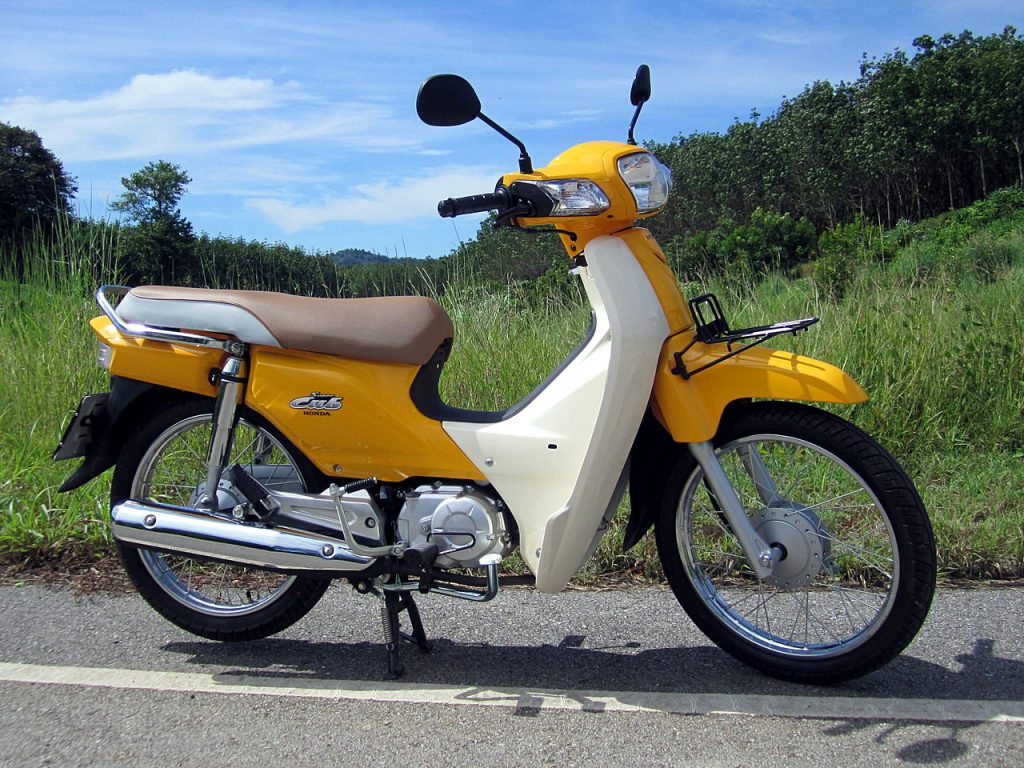Three design lessons from the best vehicle of all time
When it comes to design and leading industries, we like to think it’s the amazing that wins the day. But there are great examples from that point in the other direction.
Sometimes the simple, cheap and reliable, if you can pull it off, is what the market and customers truly need. If I asked you what is the greatest selling powered vehicle of all time, what would you say?
I doubt you’d think it was this: the Honda Super Cub motorcycle. It sold 100 million units in 2017 (according to Honda at least), and has had the same basic design for 50 years. It’s durable, affordable and easy to fix.
While I’d never suggest the best selling design equates to being the best, it certainly puts it in the running. I believe if people studied why unexpectedly successful designs, like the Super Cub or the AK47, they’d understand what people actually need and how to make it (See Good beats Innovative, on BusinessWeek)
Some things you can learn from the Super-Cub:
- People often over-estimate their needs. Much like the history of the VW Beetle, doing the core things people need very well is rare. And if you can market it right, as VW did for the bug in America, you can dominate markets with simplicity.
- A set of small inefficiencies can create a larger efficiency. The Super Cub doesn’t have the best engine, or tires, or handling. But because those things are simple designs, are easy to repair, and simple to use, the gestalt of the overall product is efficient to use and manage.
- Targeting a small market can generate designs that do well in large markets. The history of OXO Good Grips is they were trying to design kitchen tools for people with arthritis and other co-ordination issues. They discovered later their designs were valuable to everyone.
Can you think of other inexpensive and simple designs that outperform their competitors?
Related: Lessons from the AK-47.


I love this, Scott. I’ve been working on some material for a presentation about innovation in hopes of dispelling some misconceptions about “innovation” (i.e. first to market wins, it’s about products, etc.) which are all covered very well in Myths of Innovation. One of the points I’m exploring is that incremental innovation isn’t really a bad thing at all. I was going to use the Camry (or Honda Accord) as an example of an incremental innovation that has earned Toyota a ton of revenue. There was nothing really new about the product, but its reliability and the fit/finish/functionality of that particular car hit home runs across a huge demographic. The Honda Cub is even better an even better example. Keep the good content coming.
Good point, Scott. Creating products that address core needs simply, reliably, and cheaply is the key to mass success.
The Super Cub is like the netbook of motorcycles. For the past 15 years laptop marketers have used the sports car model to push their products, appealing to people’s lust for more power and speed, even though most computer users never do video production or hard-core gaming. The netbook, on the other hand, does about 95% of what 95% of users spend 95% of their time doing — email and web browsing. It does those things well — not blazing-fast, but good enough for most. And it does them cheaply. Cheap enough to upend the entire laptop market and open up huge new markets across the developing world, where millions of people can now afford their first computer.
Tata Motors of India, maker of the super-cheap (US$2160 as of December 2009), super-efficient Tata Nano, understands this. Haier, the Chinese appliance manufacturer that dominates in Africa and Latin America, understands this. WalMart understands it, too.
The more interesting question, to me, is how to spread simple, reliable, and cheap products sustainably. I’ll noodle on that some and get back to you.
Recently, a large auto manufacturer was touting it’s brand new, computer designed, hyper efficient, 2-wheeled vehicle. To this, Honda responded … “that’s nice, we’ve been building the equally efficient Super Cub (340 mpg) since 1958 and have sold 60M of them … way to catch up big auto manufacturer”. I was so struck by my complete unfamiliarity with this vehicle and it’s unquestionable success that I knew there were lessons here.
Consumer “over-estimation of need” is really the interesting point to scrutinize. First, what’s the cultural difference that makes the Super Cub successful elsewhere, but not in the US. Are other cultures better at understanding their needs, or are they satisfied meeting their needs without “excess”, or is it a question of necessity (limited money, vast distance to cover and limited repair facilities)? Second, is it the consumer’s fault that they over-estimate their needs, or is it marketing’s fault for putting us on the treadmill towards “bigger, better, stronger, faster”?
Scott, Thanks for the analysis.
I saw a TV show once where they announced the Cub was the best selling vehicle of all time. They tested it by dropping it off a roof then replaced the oil with cooking oil, after which it still ran. Now that’s reliability!
“it
Great insight here, Scott (as always). To add to your list, may I proffer the Hindustan Motors Ambassador car, essentially unchanged since 1958?
http://en.wikipedia.org/wiki/Hindustan_Ambassador
This automobile can be repaired virtually anywhere in any remote, rural part of India. Bear in mind that the term ‘road’ is a concept that exists mostly in the mind outside of the cities.
Also consider the Bajaj scooters, based on the Piaggio Vespa, which has likely sold more than any other two wheeler in the world.
http://en.wikipedia.org/wiki/Bajaj_Auto
Cheers,
Murli